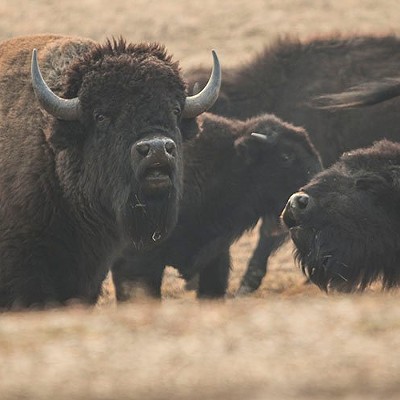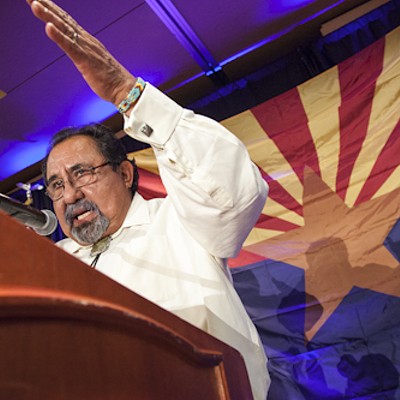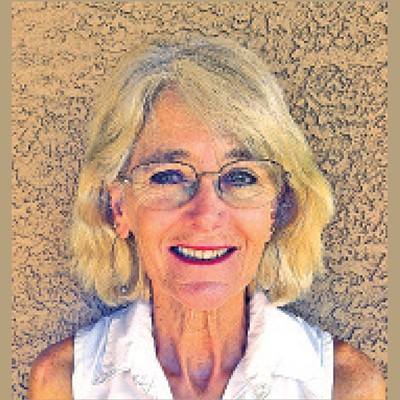Last June I was lucky enough to join a raft trip through the Grand Canyon. The experience was extraordinary.
The river was a cold, clear green, the result of Glen Canyon Dam holding back its silt. A couple of days and 62 miles into our float journey, we arrived at a magical place known as the Confluence, where the Little Colorado and Colorado rivers meet, a place that's been designated a world heritage site. There, a sweep of layered, multi-colored stone steps away in mesas toward the canyon rim, 4,000 feet above us and less than a mile away. It is a view comparable to a cathedral's brilliant red and blue windows.
But there are plans to "improve" it. We knew that up on the rim over our heads, a $120 million resort, Grand Canyon Escalade, is slated for construction by Confluence Partners LLC.
The plans are ambitious, starting with a tramway to haul tourists down to the river. Once there, visitors would be able to stroll a third of a mile on an elevated river-walk to a restaurant, amphitheater and seating area, directly overlooking the Little Colorado River.
Though the development group is not Navajo, the tribe controls the decision to allow this project. The land in question borders Grand Canyon National Park but is within the Bodaway/Gap Chapter of the Navajo Reservation. Bodaway/Gap chapter members initially opposed the development, but a vote count taken at a later, more contentious meeting reversed that decision. Meanwhile, all of the surrounding chapters, such as Coal Mine, Kaibeto, Tuba City and Cameron, have passed resolutions opposing the tramway and its associated tourist attractions.
What would this development seem like from inside the Grand Canyon? At Mile 62, several days into a river trip, it would be like encountering Las Vegas-style entertainment and crowds of people. Developers say visitors need this choice because so many are unable to hike or ride a mule down to the river. They also argue that tourists these days are in a hurry and need the convenience and speed of flying to the reservation, and then riding a tram down to the river and back.
Developers have not spelled out the tribe's share of the profits if the deal goes through. It has been reported, however, that the Navajo Nation will be required to contribute $60 million upfront to build a road and the infrastructure needed to bring electricity and water to the rim.
Who opposes this scheme? Grand Canyon National Park Superintendent David Uberuaga has gone on record as an opponent, citing resource degradation from the construction and tourist traffic afterward. Yet, there is nothing the Park Service can do to prevent it; the casino and theme park would be built outside park borders.
Opponents within the reservation may have some clout, however. The Navajo families known as the Fams, who own grazing rights on the rim overlooking the confluence, are opposed to the tramway development. The Fams have formed "Savethe Confluence," an organization that warns that a "fragile ecosystem is at stake as well as the traditional lifestyle of current residents."
Additional opposition has arisen from the Navajos' closest neighbor, the Hopi Tribe. In a unanimous Council resolution, the Hopis stated that they will sue the Navajo Nation for desecration of a sacred site if the proposal moves forward.
Many environmental groups are opposed as well. Tom Martin, co-director of River Runners for Wilderness, says, "This is sacred ground to all of us on this planet, and we are following the lead of those Native Americans who seek a tramway-free canyon as a way to earn a living in this region based on preserving the sacredness of the land."
Last summer, as we got back on our boats and headed downriver, I looked up at thetowering walls above the confluence and hoped that what I experienced—unspoiled beauty, silence—would remain forever, untarnished by anybody's notion of a Vegas-style theme park. Theodore Roosevelt expressed it best 111 years ago: "Let this great wonder of nature remain as it now is. Do nothing to mar its grandeur, sublimity, and loveliness. You cannot improve on it."
Carolyn Hopper is a contributor to Writers on the Range, a service of High Country News (hcn.org). She is a freelance photographer and writer in Bozeman, Montana.









